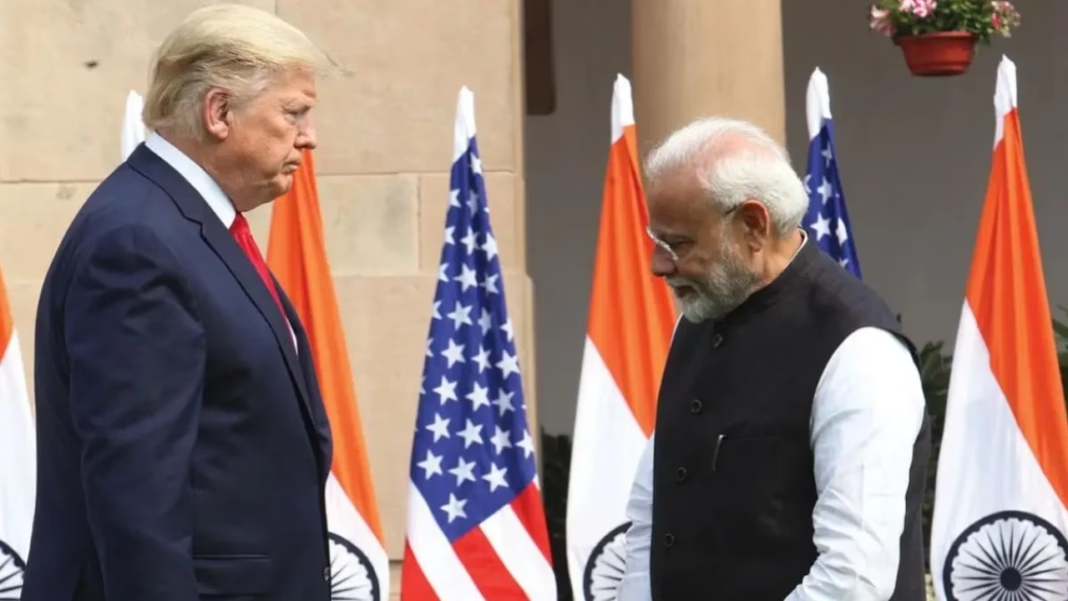Trump Tariff:With Donald Trump coming back to lead the U.S. administration, we are once again faced with global trade fears. The continued use of tariffs as a trade tool is anticipated to develop into general policies designed specifically to protect U.S. businesses. This could deter trade relations for many markets, including India. In the immediate aftermath, sectors such as gems and jewelry, auto components, and textiles are expected to feel the brunt. Exporters worry about shrinking margins and reduced demand from U.S. buyers.
Industry associations have already started damage-control measures. For instance, the Gems and Jewellery Export Promotion Council expressed concerns over a potential dip in exports. Yesterday, the Gems Association President spoke on Twitter about how the industry plans to “navigate the storm” through diversification.
IT & Services Sector: Preparing for Price Inflation
India’s IT and services sector is a big part of India’s export economy, so they are directly in the crosshairs. The potential for Trump to push for stricter outsourcing policies and increase tariffs on technical imports may increase operating costs for Indian IT behemoths.
To deal with this potential, like most, they will look to increase the number of locals hired in the U.S., increase efficiency with the integration of AI tools, and expand into new markets in Europe and Southeast Asia. These mitigation strategies will attempt to fill the gap if the revenue-generating prospect shrinks in the U.S. market.
Steel & Manufacturing: Choosing a Challenge
It’s likely that steel and manufacturing industries will face the most significant impact; higher tariffs would impact the competitiveness of Indian steel exports in the U.S.
Indian businesses are looking to pivot to domestic infrastructure demand, look to the Middle East for opportunities, and consider government-supported trade agreements to further compensate. Over time, firms will likely consider increasing their investment in value-added steel to remain competitive.
Rice Exporters Stay Optimistic Despite Tariffs
Dev Garg, Vice President of IREF, emphasized that while U.S. consumers will face higher costs due to the 50% tariff, Indian rice exporters remain largely shielded. He noted that demand patterns rarely shift in staple foods, and higher prices often end up benefiting exporters in the long run.
FIEO Flags MSME Concerns Amid Tariff Shock
Dr. Ajay Sahai, DG & CEO of FIEO, noted that while 55% of India’s exports are directly hit by the 50% U.S. tariff, key sectors like pharma, mobiles, and petroleum remain unaffected. He cautioned that MSMEs could face liquidity pressures and urged the government to support reskilling initiatives, ensuring workers stay employed until trade stabilizes.
Pharmaceuticals: Limiting market share erosion
Exports of Indian pharmaceuticals, particularly generic drugs, remain heavily reliant on the U.S. Any tariffs will only increase prices and impose a market share threat.
To limit their risk, pharma companies are considering strengthening their supply chains, increasing their investments in research and development of patented drugs, and increasing their positions in Africa and Latin America. They might also consider exemption lobbying through bilateral trade relations; each of these, they may pursue in the short term.
Textiles & Apparel: Diversification of Export Markets
The textiles and apparel industry in India, which accounts for a large share of employment, will also face reduced competitiveness if tariffs continue to affect the region.
In response, exporters in India are looking to diversify exports into Europe and the Gulf region, and have decided to ramp up domestic ecommerce and collaborate with global fashion brands to continue growth in the future. In the long term, Indian exporters and manufacturers are eager to increase sustainable textile production, which has developed international demand.
Where does India go from here in terms of its trade policy?
Trump’s tariffs have become a wake-up call for India that it is overdependent on the U.S. as a market destination and that it needs to diversify and create better trade relations around the world. With an immediate focus on diversification and reducing costs, India’s long-term trade focus needs to be on innovation, upgrades in product quality, and exploring new markets.
The greatest strength of India may well be its ability to change quickly. If industry players play their cards right, this situation can also provide an opportunity to enhance India’s position in the global economy.


